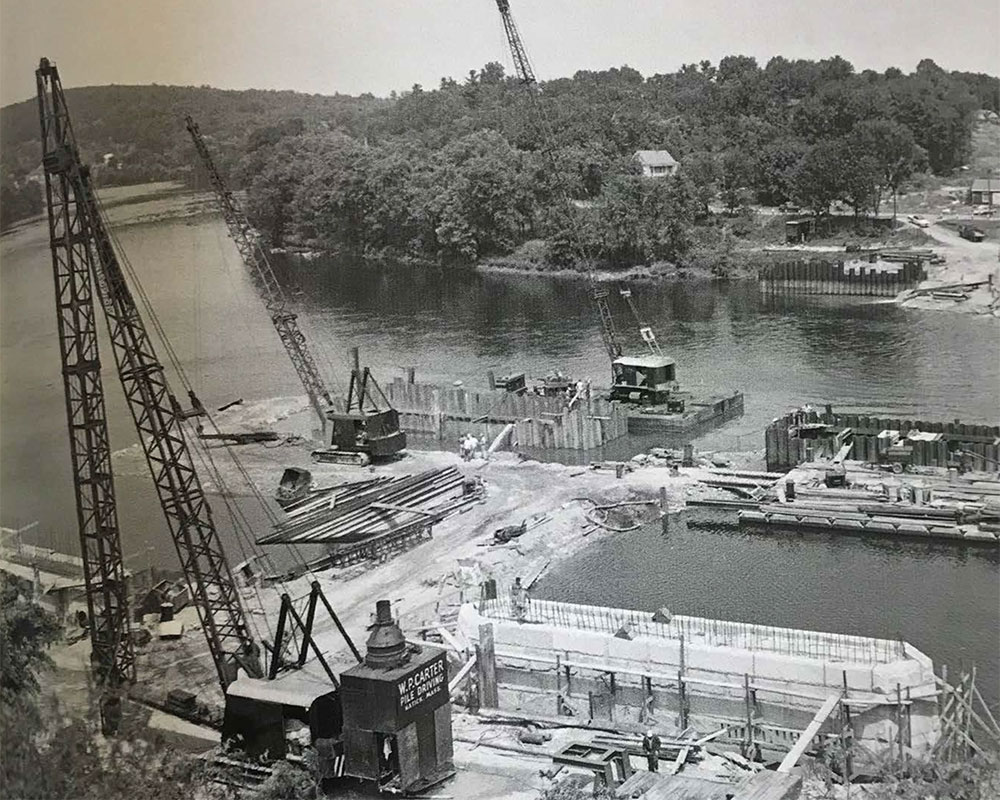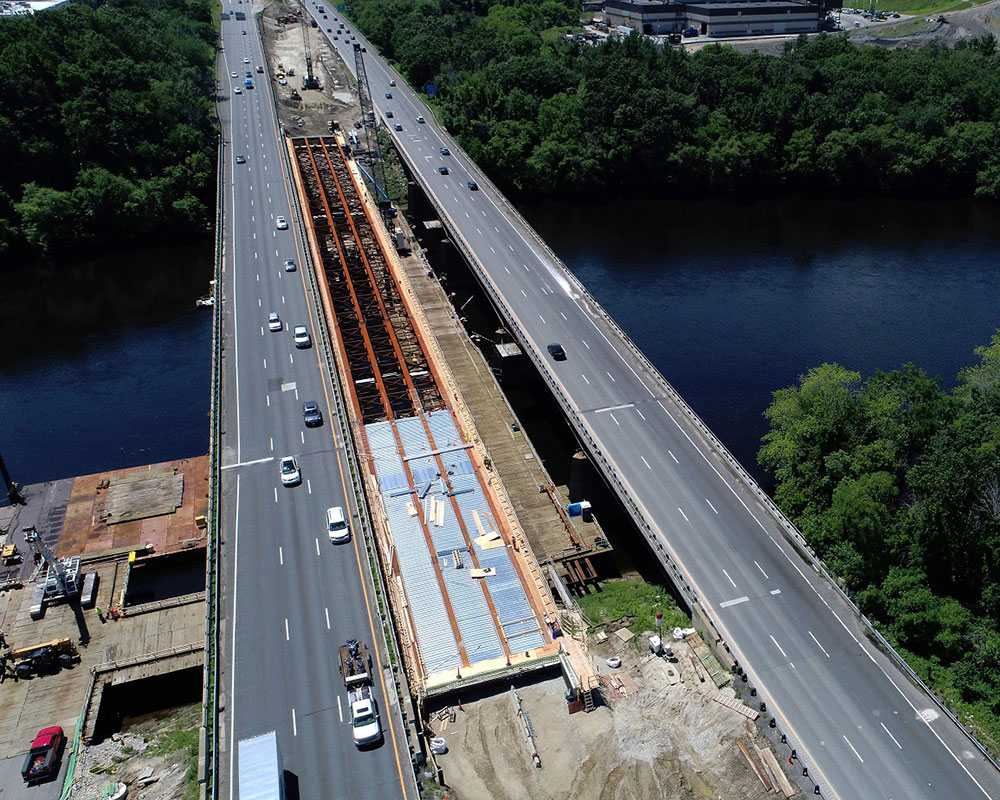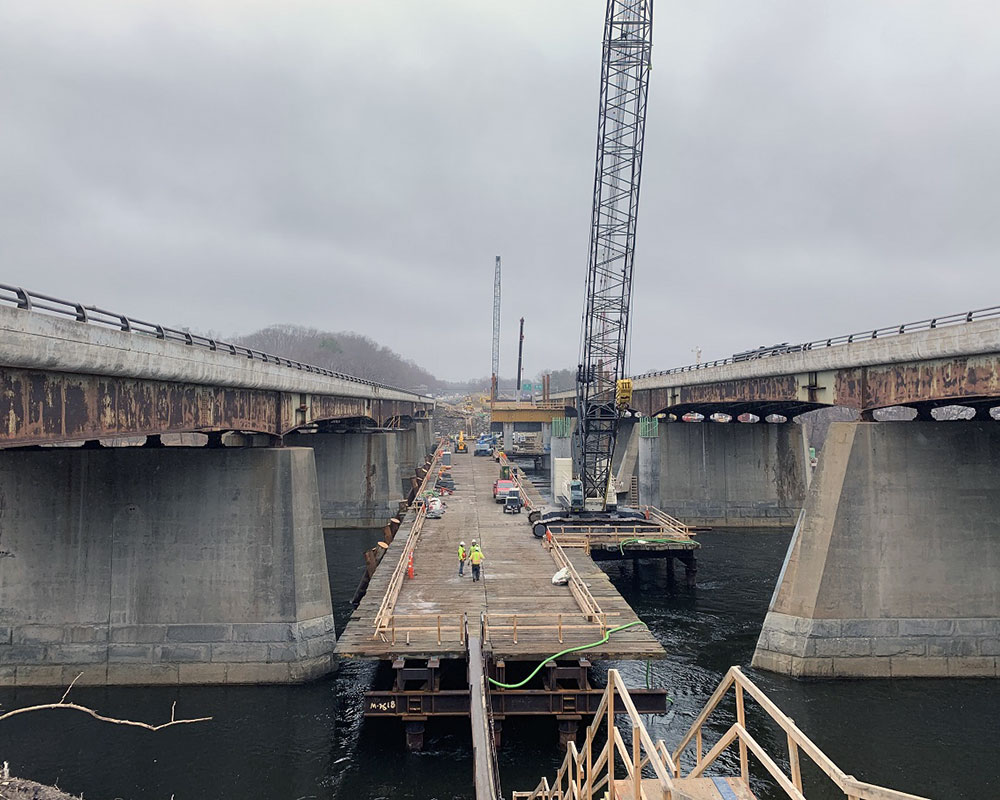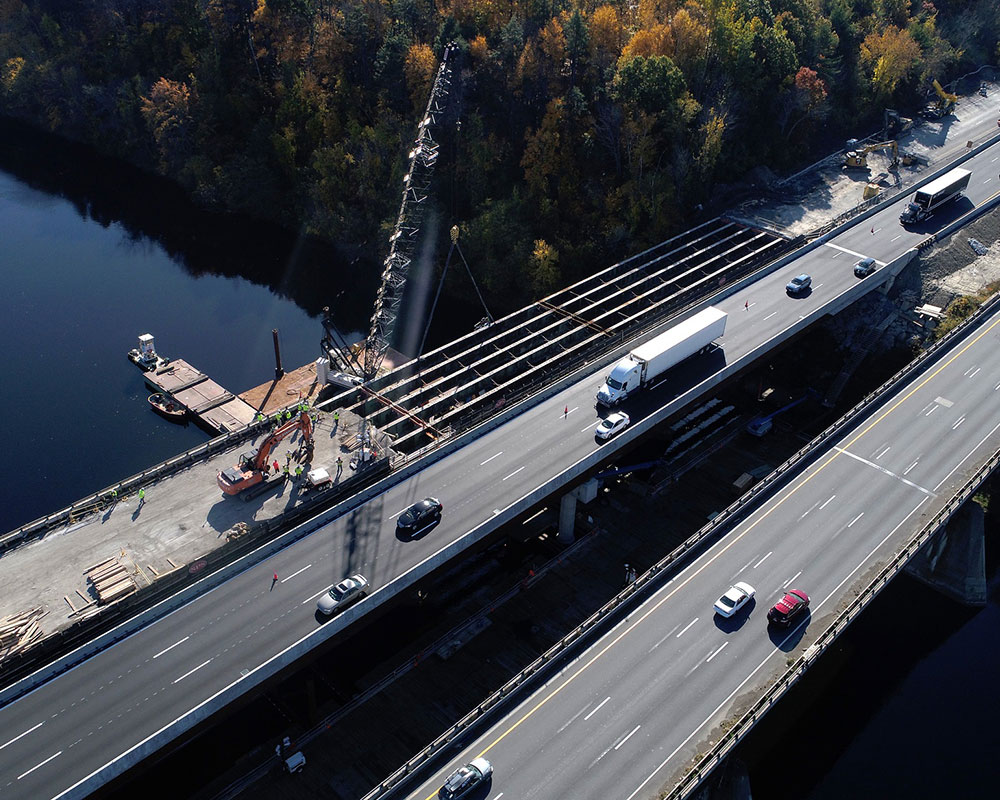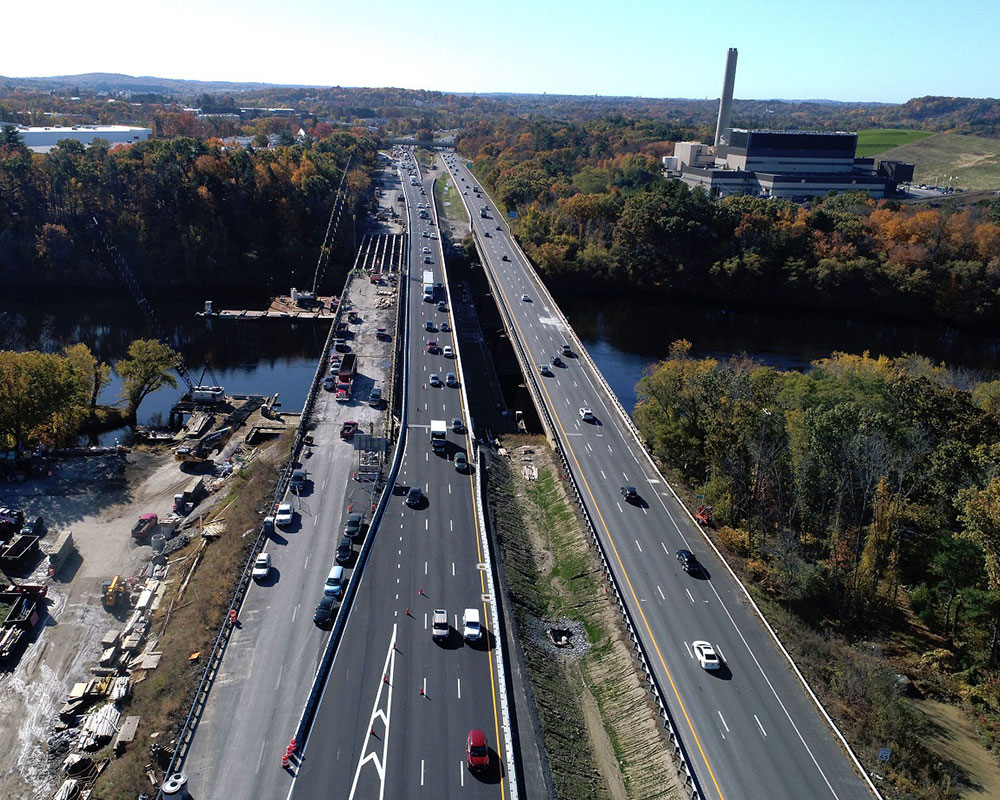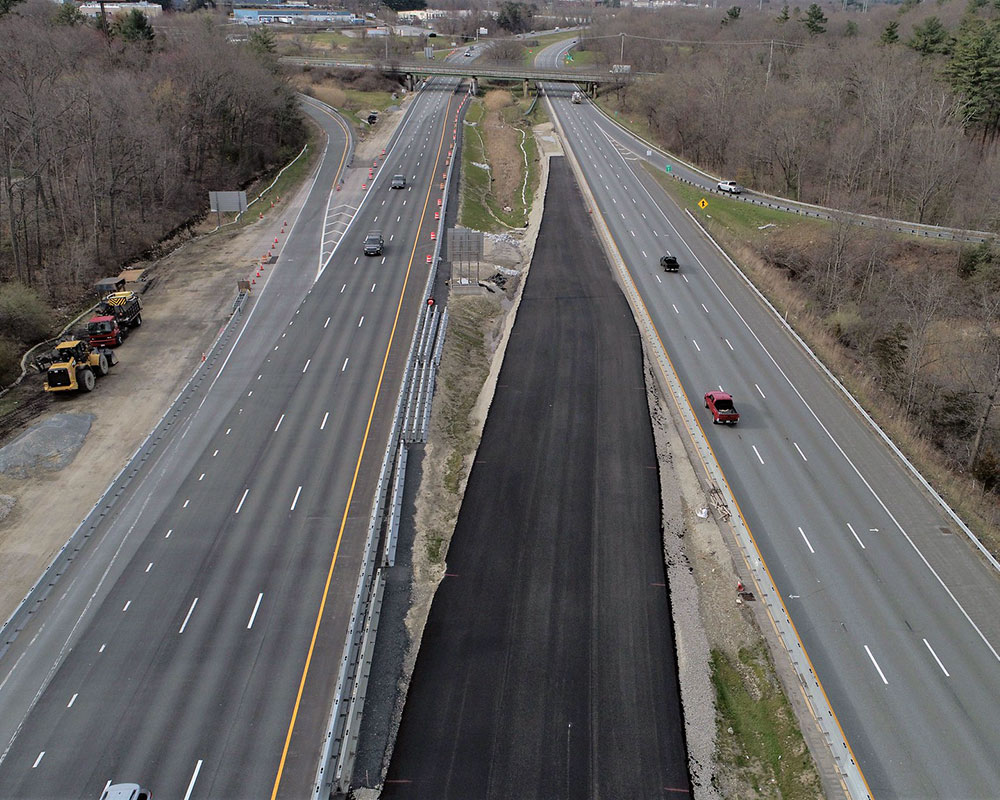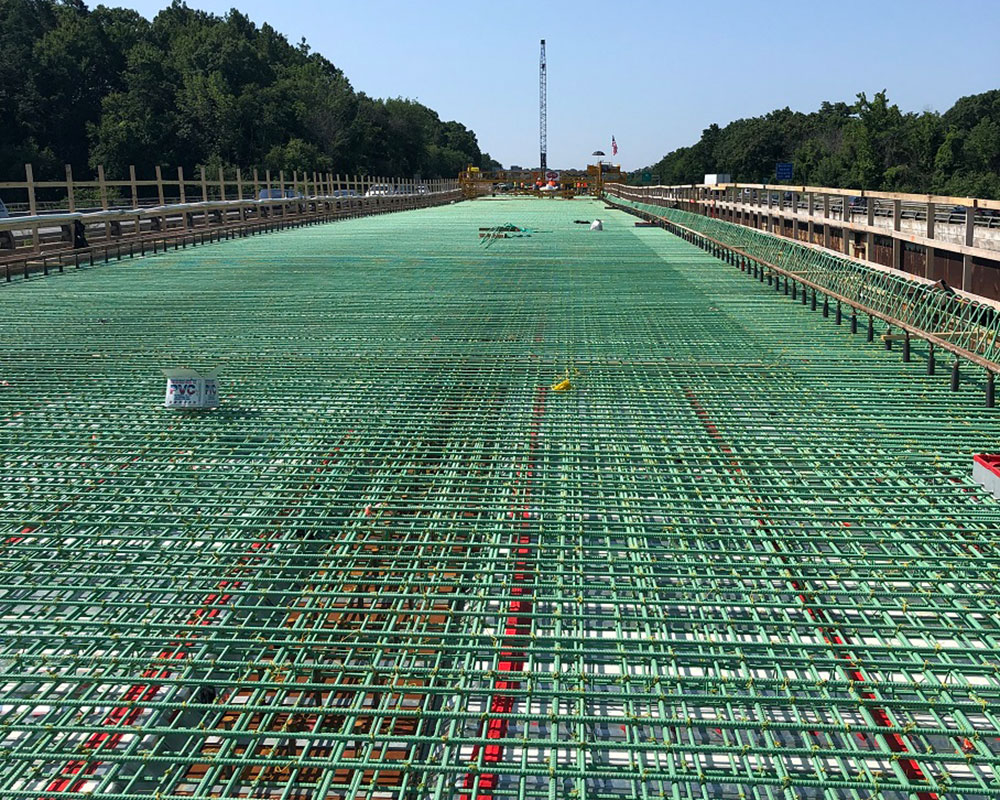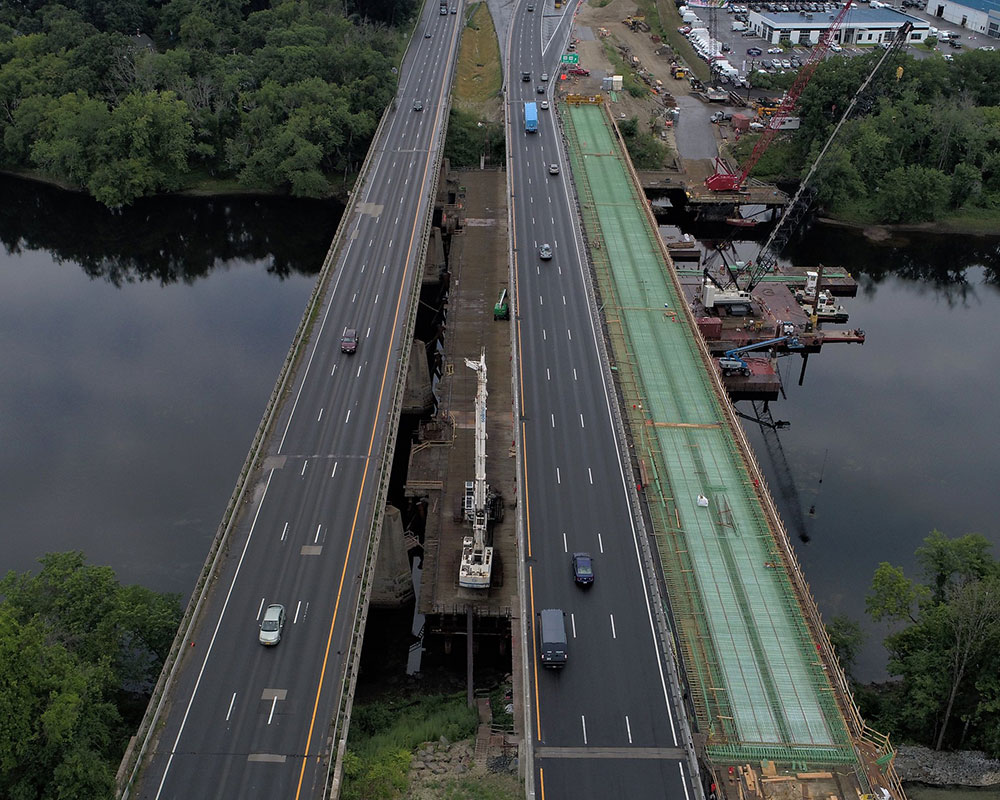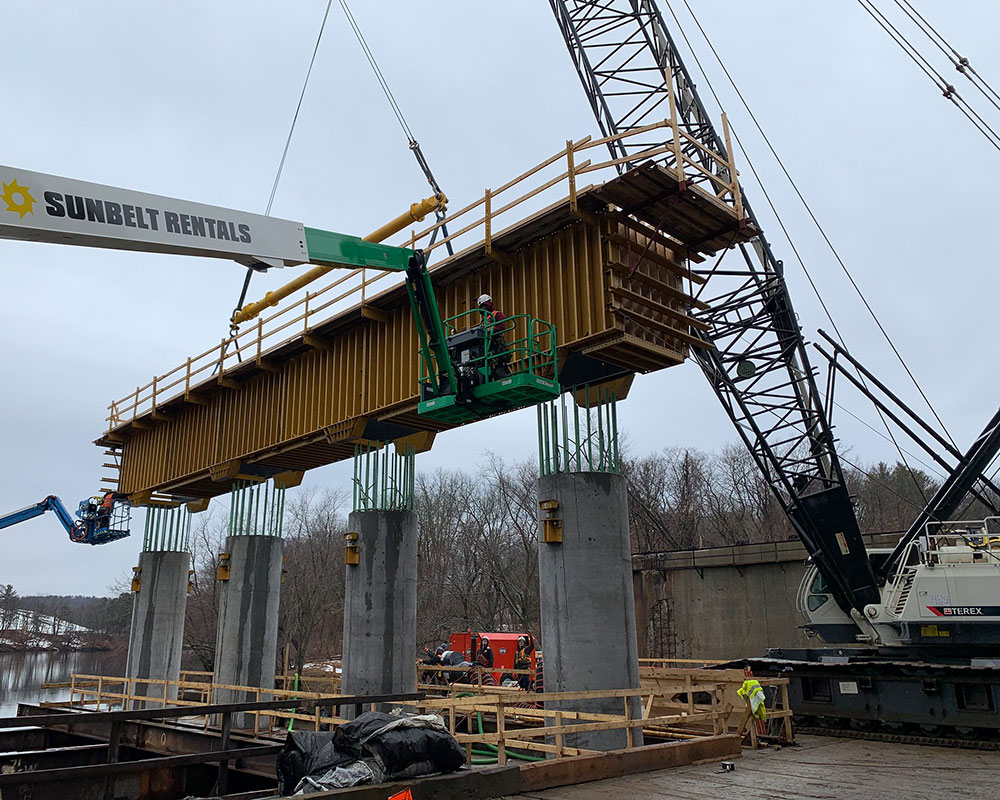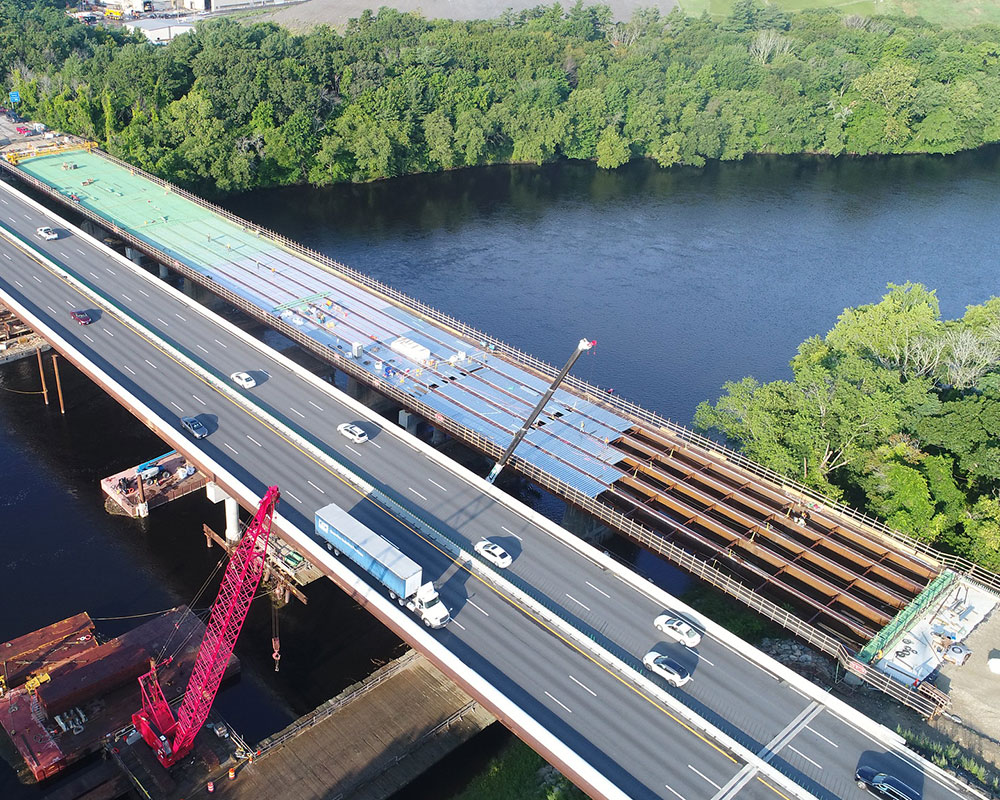An historic milestone takes place next week as the second of two new bridges across the Merrimack River in Haverhill opens to traffic.
Salisbury-based SPS New England completed the second span about a year after both northbound and southbound traffic began sharing the new northbound bridge.
The twin bridges replace the 1961-era structures in Haverhill. The then-new highway divided a neighborhood by cutting a portion of the original River Street in half. The two halves became Western Avenue and Bank Road respectively while a new River Street, carrying Routes 110 and 113, shifted northward. The new stretch put an end to one of the most dangerous, sharp curves along the river near where Western Avenue begins today.
Traffic shifts from the temporary median crossover onto the new southbound bridge during overnight work Wednesday, Dec. 1, beginning at 8 p.m. and ending at 5 a.m., Thursday. There will be temporary lane closings and short duration closings of southbound exit 108/107, Route 97 and Routes 110/113, on-ramp and exit 106, Ward Hill Connector, off-ramp Wednesday night to allow work crews to install pavement markings. The temporary speed limit on I-495 south will be raised from 45 MPH to 55 MPH.
Once the traffic shift is in place, three southbound travel lanes will be available. The existing temporary northbound alignment will remain in place through the winter, while the temporary crossover is removed. Next year, there will be three lanes plus a future travel lane and two breakdown lanes on each bridge. On the northbound side, there will be an exit-only lane for River Street.
Besides SPS, the design-build project involves Kansas City, Mo.-based HNTB Corporation. The $102 million project kicked off with public meetings and site work during the late summer of 2018.
The new bridges and access ways involved seven million pounds of structural steel, 3.5 million pounds of temporary steel, 15,000 cubic yards of concrete, 160,000 cubic yards of earth moved and 35,000 tons of pavement. Environmental benefits include replacing four piers per bridge to two each in the water. A reduced number of piers was also described as being more efficient by eliminating joints. A higher strength steel is used in the new piers.
The project was not without incident. One worker was killed and another received serious injuries after falling from an aerial lift in November 2019. Forty-four-year-old Dennis Robertson, of Manchester, N.H., was pronounced dead at the scene and forty-six-year-old Carlos Leon was airlifted to a Boston area hospital. Both worked for demolition contractor J.R. Vinagro Corp.
